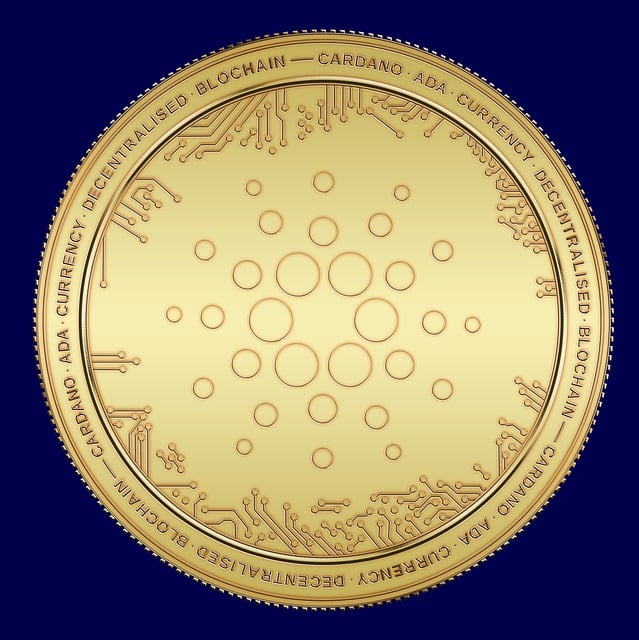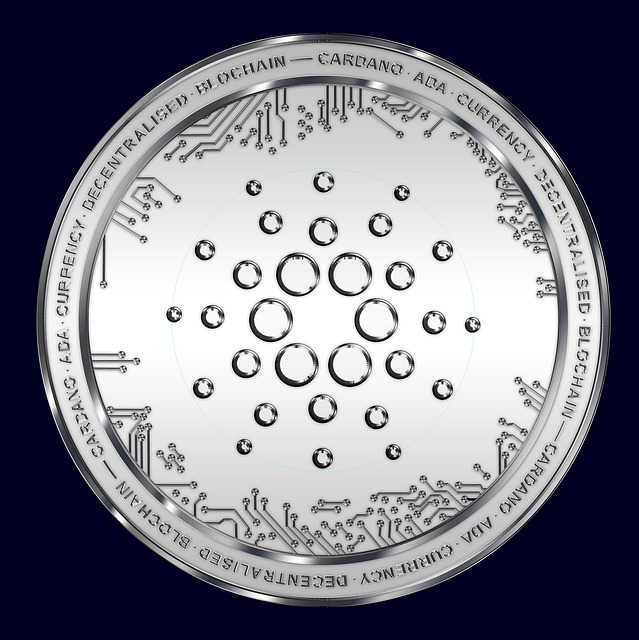
Cardano, built by Ethereum co-founder Charles Hoskinson, is a blockchain platform enhancing digital currencies and decentralized tech with its native cryptocurrency, ADA. Through peer-reviewed research and a unique consensus mechanism, Cardano prioritizes security, scalability, and sustainability. Its advanced smart contract capabilities position it as a leader in implementing Central Bank Digital Currencies (CBDCs), enabling efficient global transactions while maintaining regulatory control. By bridging Traditional Finance with decentralized technologies, Cardano promises to revolutionize cross-border transfers, reduce costs, and enhance financial inclusion, all while addressing environmental concerns through its energy-efficient proof-of-stake system.
Cardano, a leading blockchain platform, is at the forefront of bridging traditional finance and decentralized technologies. This article delves into the world of digital currencies, focusing on Cardano’s role in shaping the future of finance with its native cryptocurrency, ADA. We explore Central Bank Digital Currencies (CBDCs) and their potential impact when integrated with decentralization, using Cardano as a case study. By understanding these innovations, we can anticipate significant shifts in global financial systems.
- Understanding Cardano and its Role in the Evolution of Digital Currencies
- Exploring CBDCs: Central Bank Digital Currencies Explained
- Integrating Traditional Finance with Decentralization: The Potential Impact of Cardano-based CBDCs
Understanding Cardano and its Role in the Evolution of Digital Currencies

Cardano, a blockchain platform that has gained significant traction in recent years, is playing a pivotal role in shaping the future of digital currencies and decentralized technologies. Founded by Charles Hoskinson, one of the co-founders of Ethereum, Cardano aims to address some of the fundamental issues plaguing traditional cryptocurrencies. Unlike many other projects, Cardano leverages peer-reviewed research and a unique consensus mechanism to ensure security, scalability, and sustainability.
The platform’s native cryptocurrency, ADA, serves as more than just a medium of exchange; it is a key component in the ecosystem’s evolution. Cardano’s focus on interoperability and smart contract functionality positions it as a bridge between traditional finance and decentralized technologies. By embracing academic rigor and collaborative development, Cardano is not only revolutionizing digital currencies but also setting a new standard for blockchain innovation.
Exploring CBDCs: Central Bank Digital Currencies Explained

Central Bank Digital Currencies (CBDCs) represent a significant evolution in monetary systems, merging traditional finance with cutting-edge decentralized technologies. These digital currencies are issued and backed by central banks, offering a new way to facilitate transactions while potentially enhancing financial inclusion globally. Unlike cryptocurrency, which operates on decentralized networks like Cardano, CBDCs are controlled and regulated by central authorities.
Cardano, known for its innovative blockchain technology, has positioned itself at the forefront of this revolution. Its robust smart contract capabilities and focus on scalability make it a promising platform for hosting future CBDC infrastructure. By leveraging Cardano’s network, central banks could efficiently manage digital currencies, ensuring security and transparency while exploring the benefits of a decentralized, borderless financial system.
Integrating Traditional Finance with Decentralization: The Potential Impact of Cardano-based CBDCs

The integration of Traditional Finance (Tf) with decentralized technologies, particularly through Cardano-based Central Bank Digital Currencies (CBDCs), presents a transformative opportunity. Cardano’s robust platform offers a unique bridge between the established financial systems and the innovative world of blockchain technology. By introducing CBDCs on Cardano, central banks can leverage the security, transparency, and scalability benefits of blockchain while maintaining regulatory control. This hybrid approach has the potential to revolutionize cross-border transactions, reduce operational costs, and enhance financial inclusion.
Cardano-based CBDCs can streamline international money transfers, making them faster, cheaper, and more accessible. The decentralized nature of Cardano ensures secure peer-to-peer transactions without the need for intermediaries. This could significantly impact the global financial landscape, fostering a more interconnected and efficient system. Moreover, Cardano’s proof-of-stake consensus mechanism promotes energy efficiency, addressing environmental concerns often associated with traditional digital currencies.
Cardano’s unique blend of scientific rigor and decentralized principles positions it at the forefront of the CBDC revolution. As central banks worldwide explore digital currencies, Cardano-based CBDCs have the potential to seamlessly bridge traditional finance with the benefits of decentralization. This fusion could lead to enhanced financial inclusion, improved transaction efficiency, and increased security, reshaping the global economic landscape in significant ways. By leveraging Cardano’s robust technology, central banks can navigate this evolving financial frontier, ensuring a more inclusive and innovative future for all.






